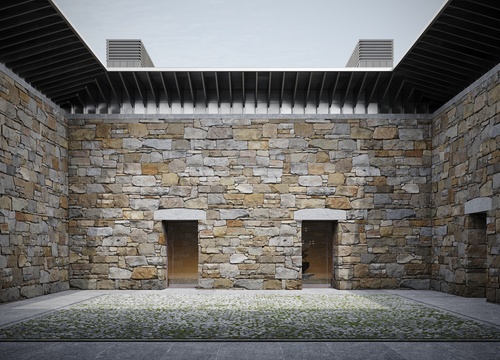
Domus Argentum. Emptiness as a powerful artistic gesture
Type – Private residence
Location – Tuscany, Italy
Date –
There were a couple of small rundown huts on the site for our Domus Argentum project. There was no point in recovering them, and to be honest there was no intention to do so either.
Since these remains are to be replaced by a new villa building, which, out of functional necessity and as a reminder of the morphology of the previous spatial composition, also consists of two volumes. Places where the huts used to be are turned into empty courtyards in each villa volume and are enclosed by massive stone walls. And if you would ask what is in those courtyards, we will tell you that it is emptiness.
In this project, the choice to leave empty space, which in most cases, many would see as non-functional and incomprehensible, we consider one of our achievements.
As we believe that the feeling of emptiness in architecture can evoke various emotions and interpretations. Empty spaces can serve as powerful symbols, representing memory, loss, or contemplation. They often create a dialogue between what is present and what is absent, allowing individuals to reflect on their experiences and the passage of time.
In some architectural designs, empty spaces are intentionally incorporated to emphasize the significance of memory. And here we go for that, as a place of the previous structures.
On the other hand, empty spaces can also convey a sense of power. Large, unoccupied areas can evoke feelings of grandeur and awe, allowing the architecture itself to dominate the experience. This can create a profound sense of presence, emphasizing the scale of the structure and the intentions behind its design.
Overall, the interplay of empty space in architecture can serve as a canvas for memory and power, challenging inhabitants to engage with the environment in meaningful ways.

